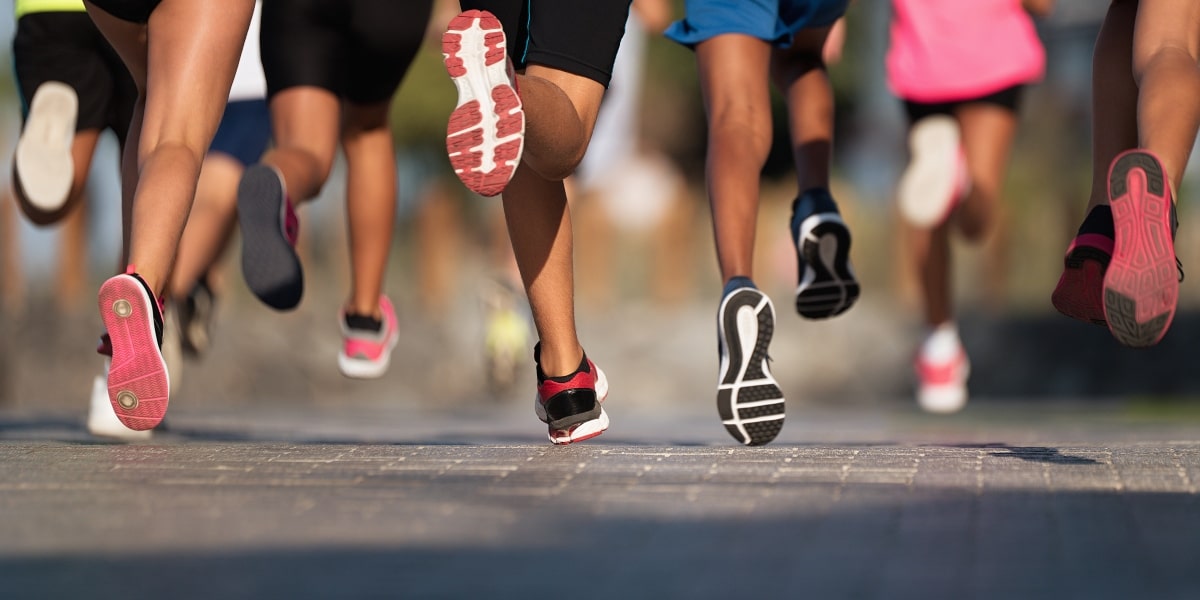How The Right Shoes Help Prevent Injury
Whether you are running, hiking, or just strolling, the right shoes can make a huge difference in your risk for injury. The right support for your unique feet will help prevent pain in your feet, knees, and back. Wearing the correct shoes can also help prevent overuse injuries, and reduce your risk for trips or stumbles that can twist your ankles and tweak your knees. In other words, choosing the right shoes can keep you in the game instead of on the sidelines, icing an injury.
Importance of the Right Shoes
Shoes are one of the most important pieces of workout equipment you own. After all, your feet are the foundation of your body, and pain or discomfort from even the smallest bunion or ingrown toenail can weaken that foundation. Foot pain can prevent you from performing your best, and foot problems can increase your risk for stumbles, slips, and falls. In many cases, your shoes make all the difference in whether your feet hurt or not.
Wearing the wrong shoes can cause a chain reaction of problems that moves up your legs to your knees, hips, and spine. These problems can affect your posture and gait, cause misalignment of your back, and lead to muscle imbalances and pain in parts of your body far away from your feet.
Choosing the right shoe is especially important after an injury, particularly if you have had an injury that requires red light therapy or other advanced treatments. Wearing the wrong shoe can prevent treatments from working their best.
Different Types of Workout Shoes
Shoes are not one-size-fits-all, especially when it comes to exercising—a pair of shoes that are perfect for one type of activity may not be right for another type of exercise. Running shoes do not work well for hiking, for example, and hiking boots are not ideal for bicycling. Each type of shoe provides the optimal support and protection for feet and ankles during a specific activity.
Running shoes
Running shoes should improve performance, be comfortable, and reduce your risk of injury. Every step you take sends a shockwave from your feet up through your legs; hammering your legs and feet repeatedly can damage bones, muscles, and other tissues to cause stress fractures, sore shins, tendinitis, and knee pain. The more you weigh, the more shock load your feet endure. Wearing the correct running shoes can minimize the shock load to protect your legs and feet.
Hiking shoes or boots
Hiking on uneven terrain can cause your feet and ankles to twist and turn. Hiking boots provide the support and cushioning to help prevent your ankles from turning. Waterproof hiking footwear can help prevent the formation of blisters and other problems caused by walking in wet shoes.
Gym shoes
Shoe manufacturers make running shoes to provide support when you are moving forward; gym shoes offer support for the sideways movements used in exercise classes. Many gym shoes feature a wide toe box to allow movement in a variety of directions.
Weightlifting shoes
Weightlifting shoes are the opposite of running shoes – running shoes absorb shock while weightlifting shoes do not. While shock-absorbing properties are great when you are running, they also cause shoes to be less stable, which can be a real problem when you are trying to deadlift, squat, or press heavy weights.
Specialty shoes
Shoemakers offer a wide variety of specialty shoes for various sports, including tennis, bowling, golf, bicycling, track and field, soccer, football, volleyball, and baseball.
Choosing a Workout Shoe
Choosing a workout shoe seems overwhelming at first glance, but it may not be as complex as it appears if you follow a few basic steps:
- Purchase shoes from a specialty store with a staff that is knowledgeable about shoes, and who can help you with proper fitting
- Try on shoes in the evening or after a workout, when your feet are at their largest
- Fit your shoes to your larger foot, as about 60 percent of people have one foot that is larger than the other
- Wear the same type of sock for trying on shoes that you will wear with your shoes
- Run or walk a few steps in the shoes in the store before making the purchase
- Check the fit – you should be able to wiggle your toes and fit your thumb between the end of the shoe’s toe box and your longest toe; the shoe should firmly grip your heel and your heel should not slip out as you walk
- Change shoes regularly, after about 300 hours of exercise or 300 to 500 miles of walking or running
For more information on how the shoes you wear can help prevent injury, speak with your podiatrist, foot care specialist, trainer, or physical therapist.

